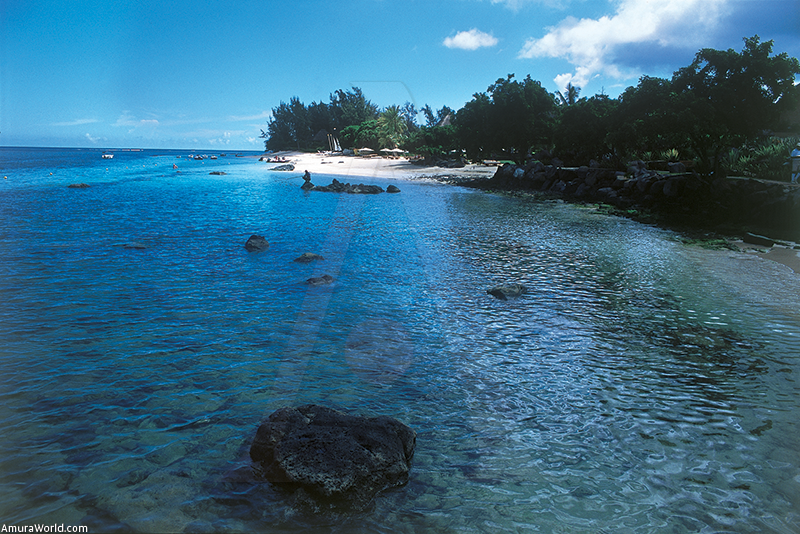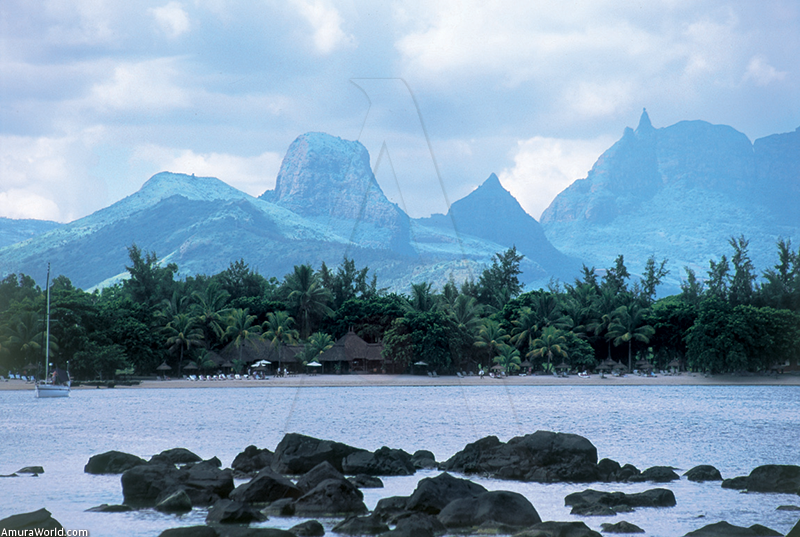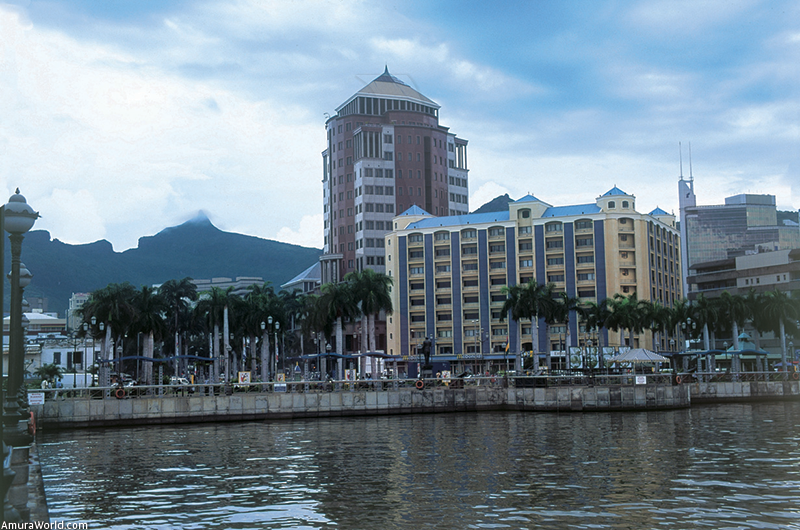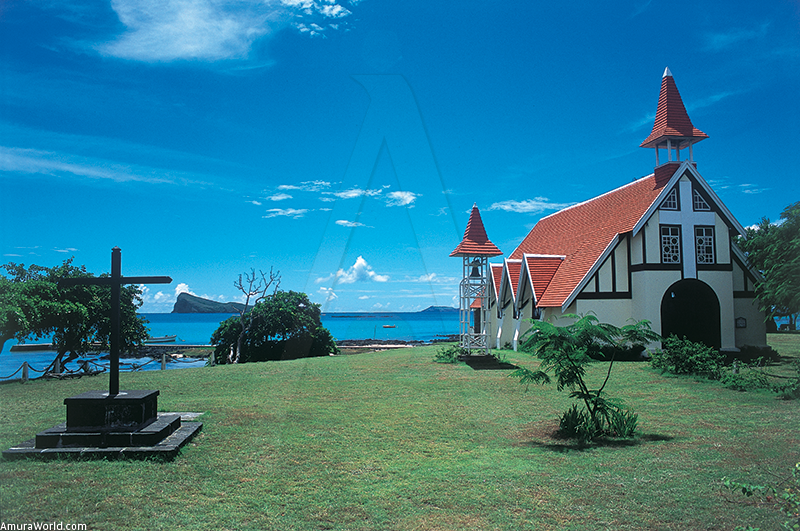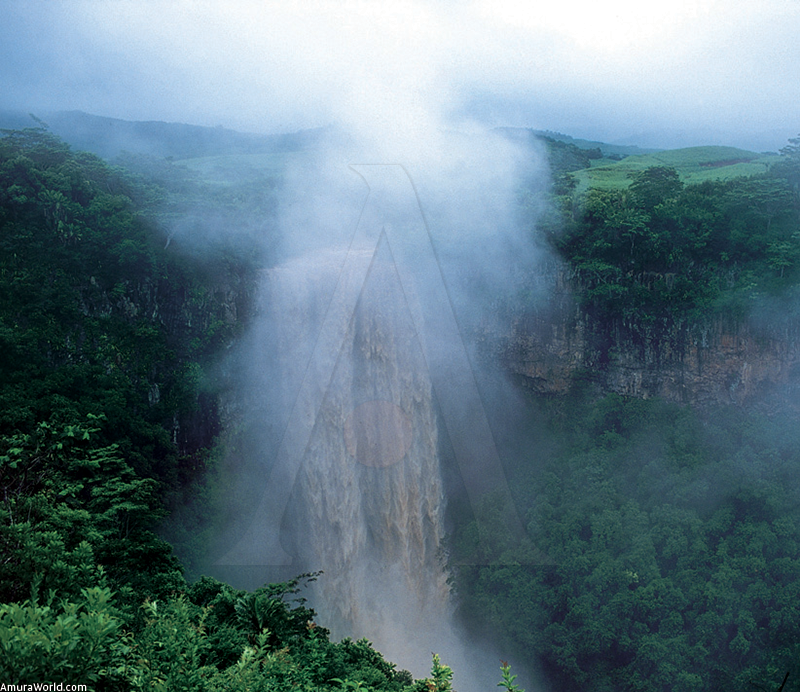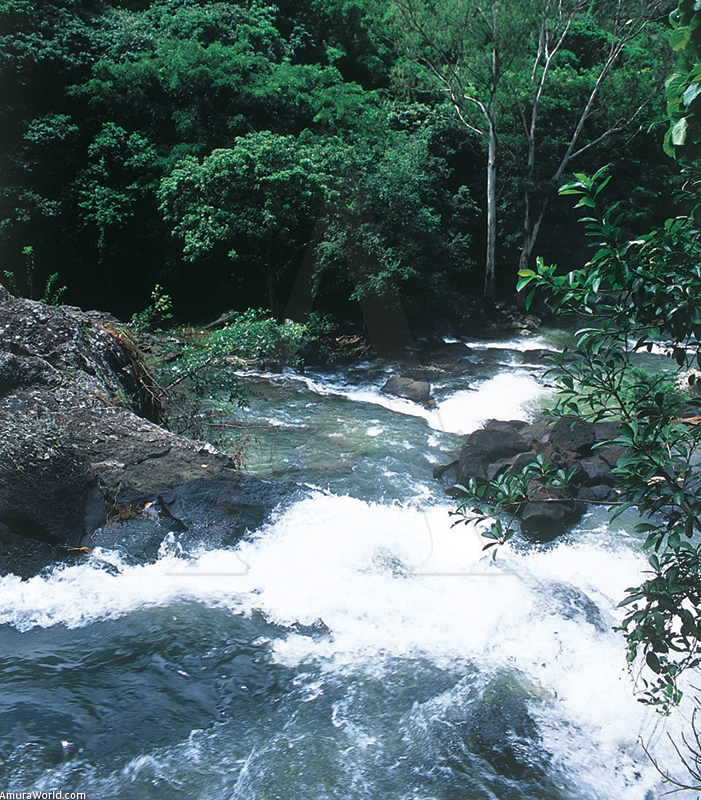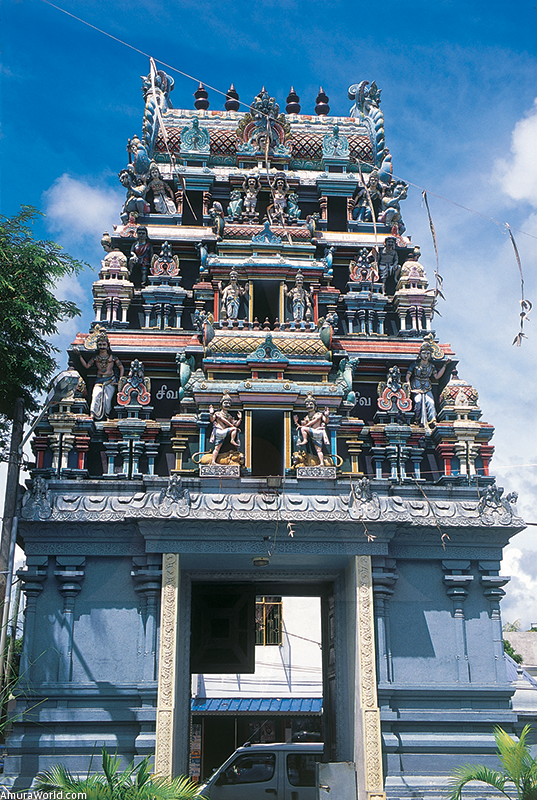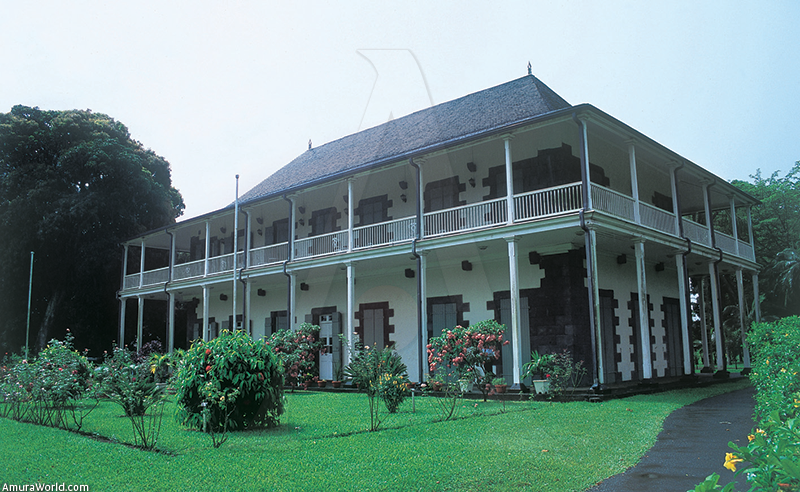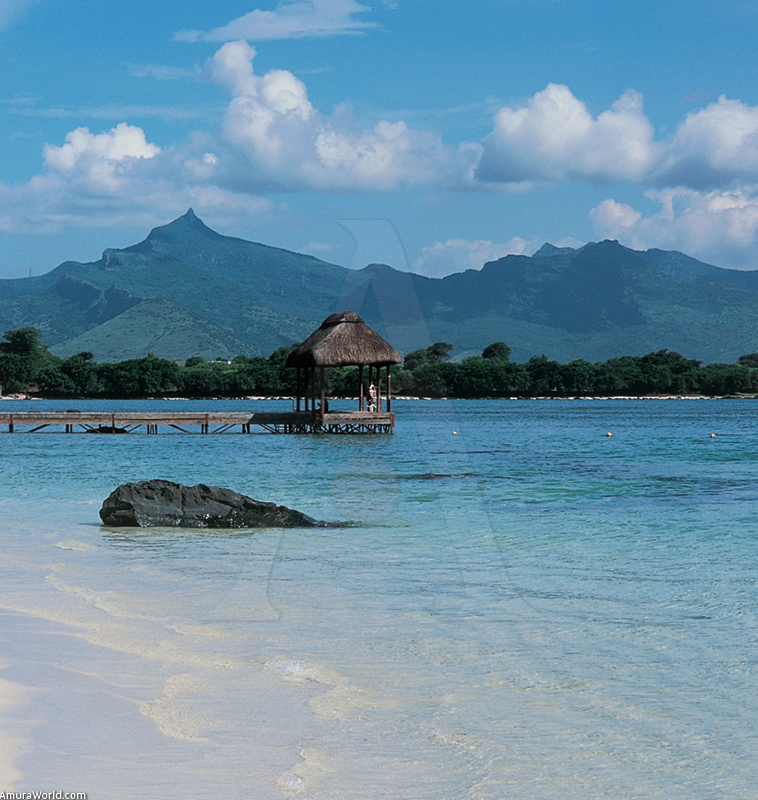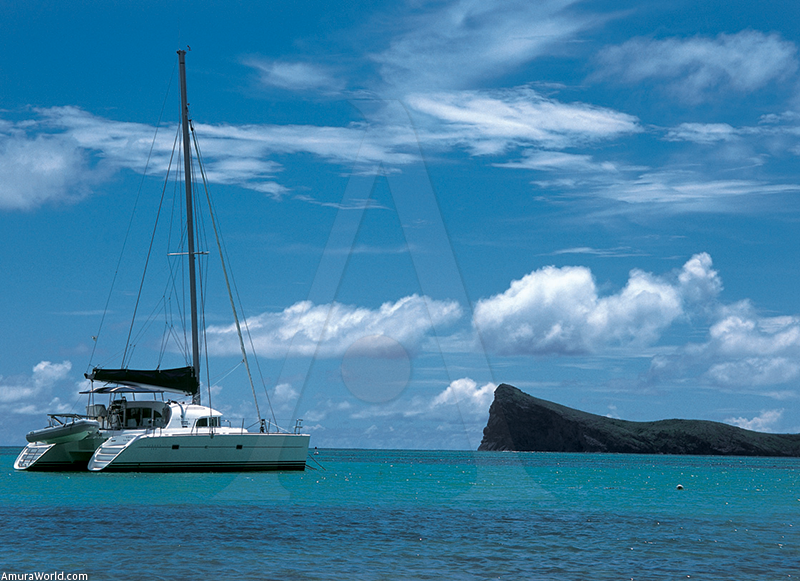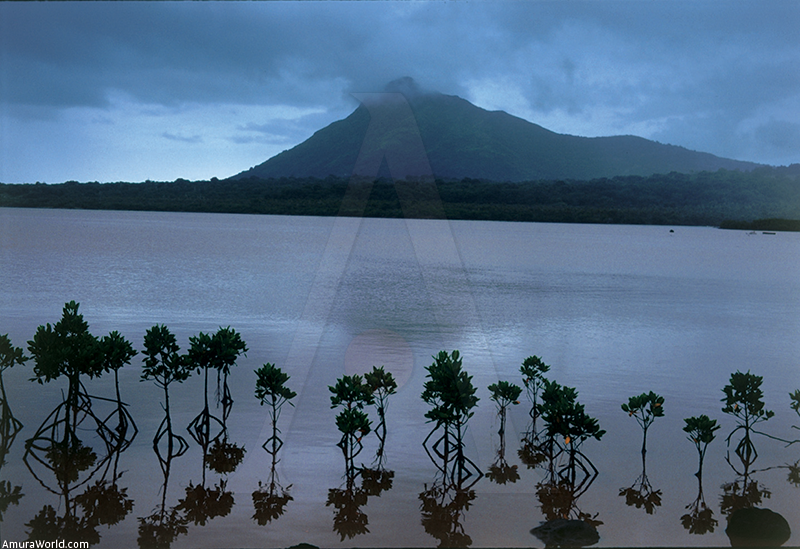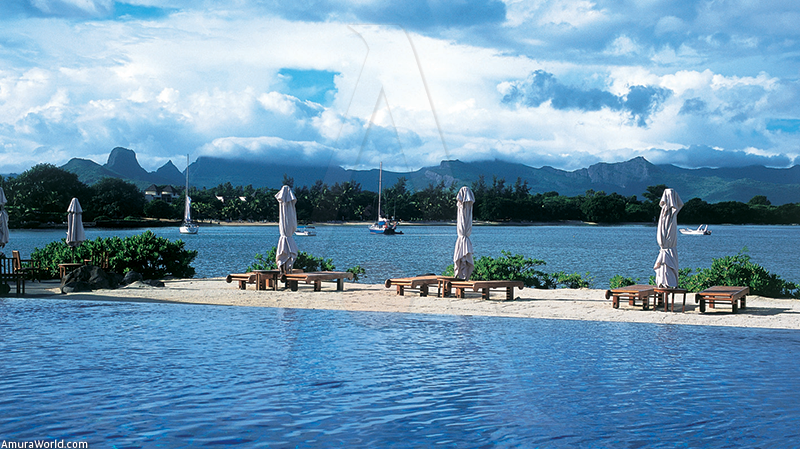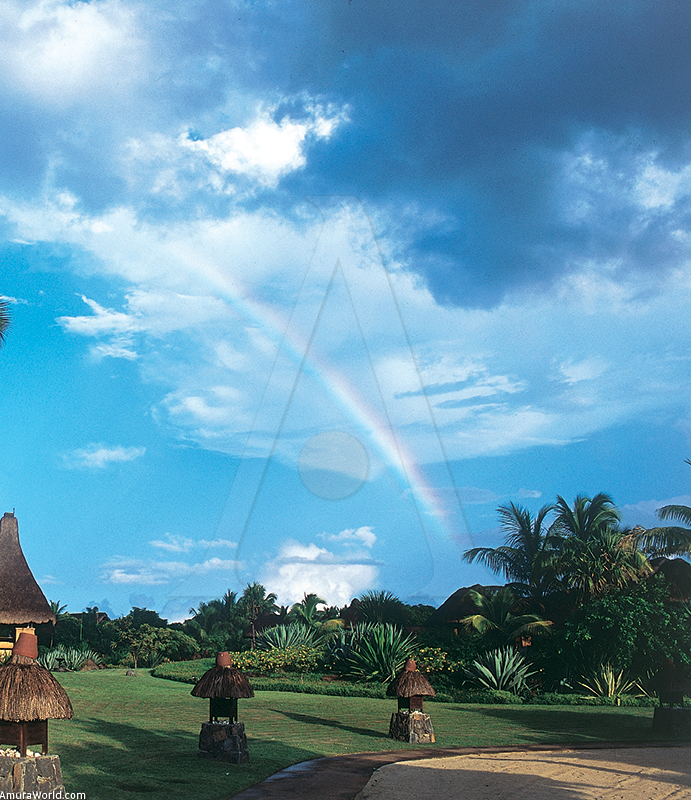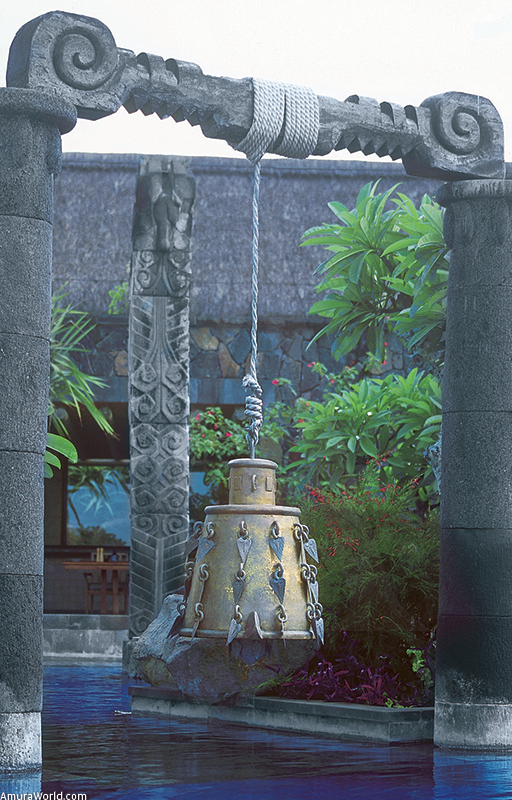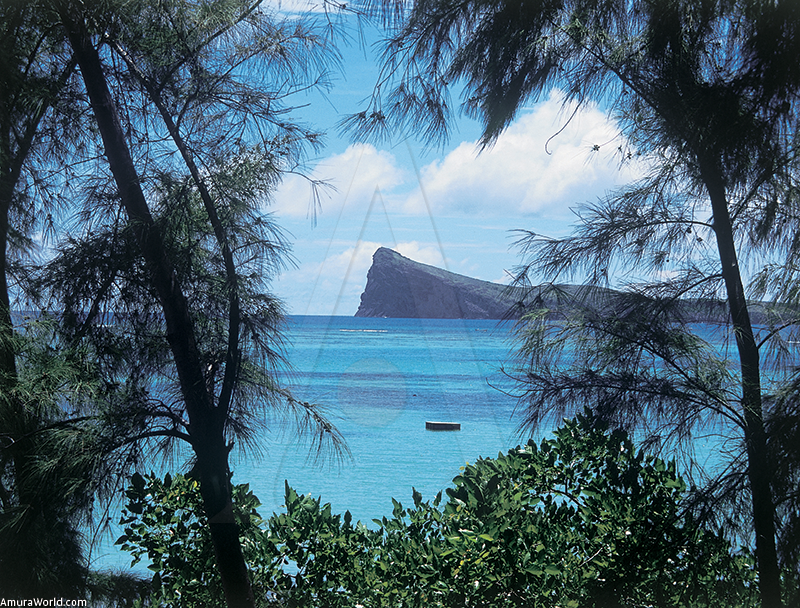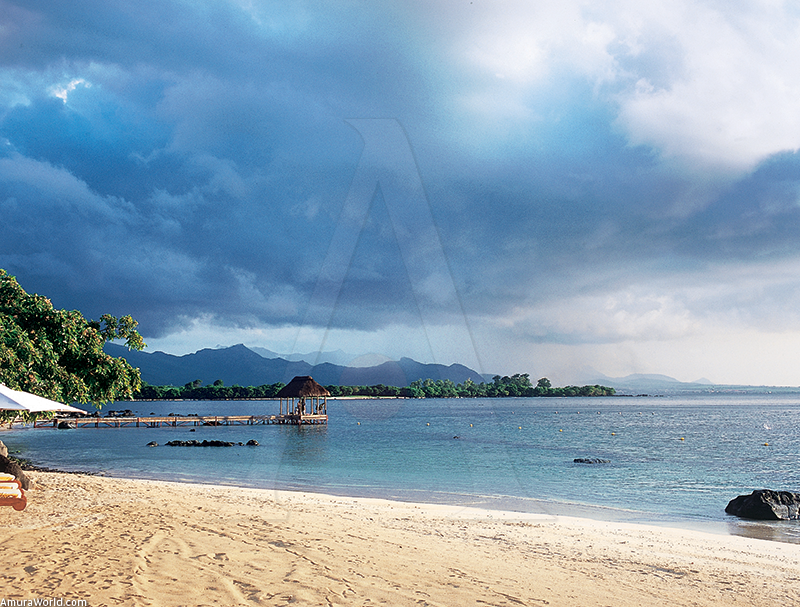From Port Louis to Tamarin
A Jewel on the Indian Ocean
Mauritius Island, in the middle of the Indian Ocean, is a jewel made up of strange mountains covered in vegetation, coral reefs and white sand beaches.
A cultural and ethnic kaleidoscope where Hindues, Chinese, Creoles and Europeans live in harmony, it has become a paradise for European tourism, a destination visited by the rich and famous.
After the 10-hour flight from Paris on Air France, Amura Yachts & Lifestyle chose the luxurious Oberoi Hotel to relax and plan our itinerary before setting sail.
History
Occupied by the Dutch in 1598, Admiral Wybrant van Warwyck christened it “Mauritius” in honor of his ruler, Prince Maurice of Nassau, and 40 years later, the first settlement was established near Mah6bourg. The Dutch introduced African slaves and sugar cane.
Five years after the Dutch left, French captain Guillaume Dufresne D’Arsel took over the island and named it “tie de France”. In 1735 colonists began to arrive and opened businesses. That was the same year of the San Ger&n shipwreck that made the island famous.
Port Louis was a safe harbor for pirates, and the sugar cane industry was prospering thanks to the French settlers and their slaves. In 1810, during the Napoleonic wars, the English took over the island and under the terms of the Treaty of Paris, in 1814 the island became British and was renamed “Mauritius”.
The French and their descendants stayed and kept their properties and language, only a few English colonists settled in the island, slavery was abolished in 1835 and Indian workers began to come.
The island flourished and finally became independent in 1968.
Now, even though English is the official language, French is still widely spoken and the majority speak Creole, a local French dialect.
In search of the unknown
Mauritius is a gem for those who love sailing and are looking for the exotic aspects for which it is renowned.
Port Louis
The capital is a small city protected from winds by strangely-shaped mountains more than 800 meters (2,624 feet) high. The cathedral shares space with a mosque and Hindu and Chinese temples. The ancient docks of the Caudan, on the shore, were transformed into shopping centers where people come to walk around and dine. The market is a living world of fresh produce, with colonial-style streets that are shaded by modem buildings.
Moka
About 10 kilometers (6.2 miles) away is Moka, located in the mountains, with valleys, rivers and waterfalls, it is a tranquil place amidst the tropical vegetation. Eureka, which lies at the foot of Junction Peak, is one of the few remaining colonial houses. It has a veranda protected by columns, its rooms are decorated with period furniture and it has a beautiful tropical garden. Built in 1830 by an Englishman and finished in 1856 by Eugène Le Clézio, the first president of the Supreme Court, it belonged to his family for six generations before it was sold in 1986. It is a true haven that invites you to enjoy the romantic ambiance and the Ravine d’Eurèka, an impressive canyon at the edge of the property, where the Moka river, and its waterfalls, runs through the unspoiled jungle.
Rose Hill
A cultural city, its theater was inaugurated in 1933 with an operetta starring Maurice Chevalier and it was the home of artists and writers. Along the highway we discovered the Trou au Cerfs, an ancient crater 90 meters (295 feet) deep, tea plantations all along the hills, the Tamarin waterfalls and the Valley of 23 colors.
Black River Gorges
This national park, which covers 3.5 per cent of the island contains 150 species of plants and nine of endemic birds, ebony and tambalacoque, or dodo, trees, the Rivière Noire canyon and the Alexandra waterfall.
Grand Bassin
The view of the island is impressive from Chamarel and Mome Peak, which is 554 meters (1,817 feet) high, dominates the bay. However, the most mystifying, magical place is Grand Bassin, a sacred lake for the Hindu who invoke Shiva, whose effigy rises mysteriously from the water.
Mon Plaisir
In the northern region we explored the marvelous botanic garden that surrounds the Chateau Mon Plaisir mansion. It contains over 600 species of plants, 60 palms and various spices.
On the Lagoon 380
It was time to set sail and discover the coast, coral gardens, white beaches and stunning islands. Rains accompanied us on our magnificent voyage on the Lagoon 380 catamaran. It measures 11.55 by 6.53 meters (37.8 by 21 feet), length and width respectively, has a 47 square meter (505 square foot) mainsail and four cabins. The breeze was light and we had to use the engine to find favorable winds.
Following the coral barrier that surrounds the island we passed Baie du Tombeau or Tomb Bay, which gets its name from all the shipwrecks that occurred here, the most famous was that of the governor of the Dutch Indies, Pieter Bothe, in 1615. After almost an hour, we reached Baie auxTortues or Arsenal Bay.
Diving, fishing, beaches and more...
Golden sand beaches and coconut palms are the typical images of paradise and the ruins of the old French arsenal dominate the bay, which is presided by the Oberoi hotel, the most elegant on the Indian Ocean.
We passed Pointe aux Piments (Cape of Peppers) to reach Trou aux Biches (Hole of the Deer), where we anchored to dive in the coral reef and discover a marvelous world of colors and forms. Mauritius Island is internationally renowned for its diving and fishing sites. We found stone fish, turtles, lobster and butter- flies. The best sites are Holt’s Rock (-30 to 37 m/-98 to 121 ft), Lobster Rock (-10 to 22 m/-32 to 72 ft), Le Tom- bant of Point aux Canonniers (-32 to 60 m/-104 to 197 ft) and the sunken ship Stella Maru (-15 to 25 m/ - 49 to 82 ft), all wonderful sights. We returned with so- me lobsters for dinner.
The long white sand beach frames the hotels and restaurants, and gives intense excitement to this pla- ce, located on the turquoise side of the lagoon and su- rrounded by the coral barrier.
The afternoon wind was stronger, clouds were con- centrating overhead but we had no trouble passing Canonniers Point, with its elegant homes, to enter Grand Baie, a well protected, spectacular bay with a fishing port, restaurants, discos and shops. After visi- ting the small, red-roofed church in Malheureux Cape, on the edge of multihued, calm waters, a delicious dinner with the lobsters was prepared.
Paradises of sand and water
We set sail early for tie Plate or Flat Island, which we rea- ched after two and a half hours of calm sailing, passing small Coin de Mire island, with its inhospitable cliffs and an excellent diving wall (-20 mt/-65 ft). He Plate is a haven of white sand beaches, an ideal lagoon for diving with a visor or taking a walk to the lighthouse.
We decided to anchor at Gabriel isle to explore Shark Pit, on the northwestern side of Flat Island. Descending to -12 m (-39 ft), the current took us to a basin 15 m (49 ft) in diameter where 11 black tailed shark were swimming in circles, surely attracted by the highly oxygenated water. Diving here requires a lot of effort because of the strong current that makes it necessary to hang on to the rocks.
The night sky was lit up by stars and, far away, the lights of Pereybére were shining, the sea was calm and the atmosphere was completely peaceful. It was heavenly.
Our third day sailing was longer: we reached lie aux Cerfs, or Island of Deer, in six hours. We sailed to Grand Gaube, a fishing village known for the boats they make out of black wood, and, with southwesterly winds, we reached our destination in two hours.
Bordering the savage
The coast, protected by the coral barrier and the grass- lands, becomes savage. Poudre d’Or is a small fishing village filled with legends of sunken treasure. It is whe- re the Saint Gerán shipwreck took place in 1744.
Because of the fierce winds and terrible storms, navigation is practically impossible on the east side of the island during the winter. In Poste Lafayette the barrier hugs the coast and then protects Poste de Flacq, a large inland lagoon, with its Hindu temple built on a small island and two very exclusive hotels, the Saint Géran and Prince Maurice, which are loca- ted on virgin, white sand beaches that are bathed by turquoise waters.
Far away, we could see the silhouette of the world’s biggest sugar refinery. To the south, in Belle Mar, we found a path through the reef. It is a famous dive spot but we could not reach it because of the strong current and side wind. We continued south with a sky that was filling with black clouds. Using the engine, we entered the lagoon through the Trou DTau Douce pass and an- chored on the west coast of the Island of Deer, which pro- tected us from the wind. It started to rain, the sea turned gray and the water became furious. The storm lasted mo- re than two hours but the sun set amidst bright colors.
Taking advantage of the morning’s clear sky, high tide and calm breeze, we sailed passed the coral ba- rrier opposite Bambous Mountain, which rises 626 m (2,054 ft) near the beach, backed by a mountain chain where you will find Blanche, 523 m (1,716 ft) high, and Maurice, 316 m (1,037 ft) high. The view, with the tur- quoise sea in the foreground, is delightful.
The barrier forced us to sail farther from land be- cause, in this area, it is separated from the coast for about 4 km (2.5 m). Lion Peak, 450 m (1,476 ft) high, dominates the beautiful bay where Mah6bourg and its beautiful Notre Dame Des Anges church are loca- ted. It is a peaceful city which we toured when we arrived, because it is near the airport.
De la Passe Island shelters the ruins of a large French fort and Aux Fouquets island, a lighthouse. These two islands protect the pass to Port MahGbourg. The views are stunning, thanks to the extraordinary contrast of the turquoise lagoon, the white sand bea- ches, the green foliage and Aux Aigrettes island, which is a natural reserve.
Passing Blue Bay we sailed near the coast because the coral barrier disappears for 20 km (12.4 m). The panorama changes, the dark, rocky cliffs plunge into the sea, lashed by strong waves and guarded by green mountains. In Soufleur the sea presses against the cliff to emerge, roaring, though a blowhole and a natural bridge that adorns the gorge.
The black basalt creates a dramatic scenario lapped with strong waves and, in Souillac, the new coral barrier begins, tracing white sand beaches at the foot of the Fantaisie and Cocotte (771 m/2,529 ft) mountains.
A back wind sped us on our way, passing the Jacotet and du Cap bays, to take the Saint Jacques Pass to the protected lagoon on the Mome peninsula, which is dominated by the Le Mome Brabant Peak (556 m/1,824 ft).
When we were looking for a place to anchor the dominant wind started to get stronger so we decided to leave the lagoon through Prairie Pass, a well know dive spot that is home to grouper, whitetip shark and rays. The current was strong, the dangerous wind did not allow us to use the sail to navigate around the peninsula and, passing the cape, we entered a protected area, where we found a faint breeze and calm waters, which permitted us to enter the lagoon through the L’Ambulante pass and anchor near Benitiers Island.
The scenery is magnificent: a lagoon of changing blue hues, the flat peak of Mome Brabant, the green mountains, with clouds that seem to be tied to its peaks, that descend to the coast and white sand beaches with a few hotels. The west coast is the most protected and is a veritable paradise for diving with some exceptional places like Rempart-Serpent (-20 to 25 m/-65 to 82 ft, where many species hide in a wall), Couline Bambou (-18 to 35 m/-59 to 115 ft, with a very irregular facade) and La Cathédrale (-15 to 27 m/-49 to 88 ft, with canyons and arches). The Grande Rivière Noire Bay, protected by the Tours Martello and L’Harmonie forts, is the ideal place to anchor and visit the mountains and is also renowned in the world of sports fishing for it is shark and sailfish.
Tamarin and the return home
We finally reached this small fishing port in Rempart Mountain, part of Tourelle du Tamarin (548 m/1,798 ft) which is next to the salt flats, and is a very popular place with the surfing crowd between June and September.
A strong storm was announced for the next day and this forced us to leave the catamaran with Vindoo, our skipper, and return to the hotel by road.
The plane would take us back home the next day. We found out that Vindoo was stranded for a full day in Tamarin. When we took off, we saw, for the last time, the turquoise ribbon that surrounds the island. Our memories, full of heavenly images, made us feel nostalgic about taking leave of this fabulous experience, of terrestrial and submarine vistas, and of the beautiful people with whom we had shared this extraordinary time.
Shiva
The God who Watches over Mauritius
According to legend, Shiva and his wife Parvati where going around the world in a carriage filled with flowers when they discovered a beautiful island surrounded by an emerald- and turquoise-colored sea. Shiva, who carried the Ganges on his head to protect the earth from floods, decided to set down on the island but, during the landing, some drops fell into a crater, forming a natural lake, the Grand Bassin or Ganga Talao. The Ganges did not like the idea of leaving some of its water on the deserted island but Shiva answered that soon the men bom on its shores would reach the island and would make a yearly pilgrimage to the lake.
This is why every year, in February or March, the island's Hindu pilgrims dress in white, take a kanvar (a miniature wood temple) and perform the Puja ritual: they bum incense, float offerings of flowers and food on the lake and pray. The Maja Shivaratree is carried out in honor of Shiva and the Ganges and the lake is covered in offerings for three days. It is an exceptional place in which the magic of the gods is palpable, where a mysterious ambiance fills the air and mysticism envelops the temples and the forests that surround them.
Text: Patrick Monney ± Photo: Patrick Monney


